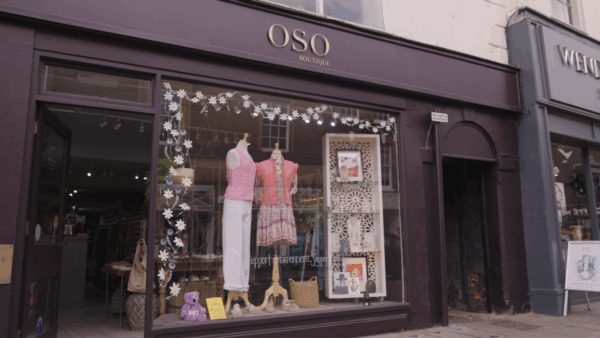The Centre for Retail Research has revealed the devastating extent of losses to Britain’s high streets and town centres in ‘The Crisis in Retailing: Closures and Job Losses’.
Whilst the research organisation claims that retailing in the western world has been in crisis for more than a decade, a toxic combination of sky-high rents, business rates, coronavirus, lockdowns and now the cost of living crisis have had an alarming effect on Britain’s vital retail industry.
Tracing the decline to the start of the millennium, the report states: “This followed rapid debt-fuelled expansion of shops in the 2000s that pushed up rents in city centres to astronomical levels. This came to an end in the financial crisis of 2008, which led to the collapse of many retailers and store closures. The most famous business failure was Woolworths.”
Seismic shifts in consumer behaviour followed, first with more ‘shopping around’ for best prices (invariably the cheapest) which gradually evolved into a momentous shift towards online price checking and shopping.
Leisure spending has also undercut retail sends as different sectors compete for the shrinking public purse. “Money that would otherwise be spent in shops was going on meals out, short breaks, gym membership, subscriptions to Streaming Channels, foreign holidays and spa, health and wellbeing treatments. Although foreign tourists were visiting Britain in the 2010s, their numbers and spending levels were far below what UK residents spent when holidaying abroad”.
The growth in online retailing was faster in the UK than any other country. By 2006 around 6.6% of retailing was online; by 2013 it was 12.7% and b 2019 it was 19.2%. This meant that bricks and mortar stores lost a significant chunk of their market between those years, immediately followed by covid lockdowns, which gave a further boost to online sellers.
By the end of 2021 26.5% of UK retail sales were online, although some of that market share was lost when shops reopened properly again. Also offsetting the trend were physical stores which launched online offerings, to ensure they took a share of this growing marketplace. Those stores which did not gain a foothold online invariably suffered. By 2021 more than half of John Lewis & Partners’ sales were online, forcing even this bellwether retailer to reduce its bricks and mortar store portfolio.
In 2022 high street footfall was still 10-15% below 2019 levels and as shops are forced to close at an alarming rate thanks to shocking rent increases and little relief on rates, it’s possible that footfall may never get back to levels seen in the late 2010s.
The Centre for Retail Research believes that “A satisfactory future for high streets will only occur if online retailers pay the same rates as store-based retailers.” Its research found that in 2022 there were:
11,090 independent store closures.
53,741 independent job losses.
13,240 specific retail redundancies and rationalisations.
6,055 multiple store closures.
76,709 jobs lost in multiple retailers.
7,784 self-employed or concessions in larger shops lost.
This brings us to a shocking total of 151,474 retail job losses and 17,145 total store closures last year in Britain alone.
This compares to a total of 105,727 retail job losses in 105,727 and 11,459 store closures, of which 8,801 were independent retailers. The picture was also grim in 2020, when there were 182,564 retail redundancies and 16,045 store closures.
Some of the most recent and high profile closures in recent years include: Select, Debenhams, HMV, House of Fraser, Poundworld, Conviviality Retail, Maplin, Toys ‘R’ us, Palmer & Harvey, Store Twenty One, BHS, Brantano, Phones4U, Blockbuster, Comet, Clinton Cards, Game and Peacocks.

















